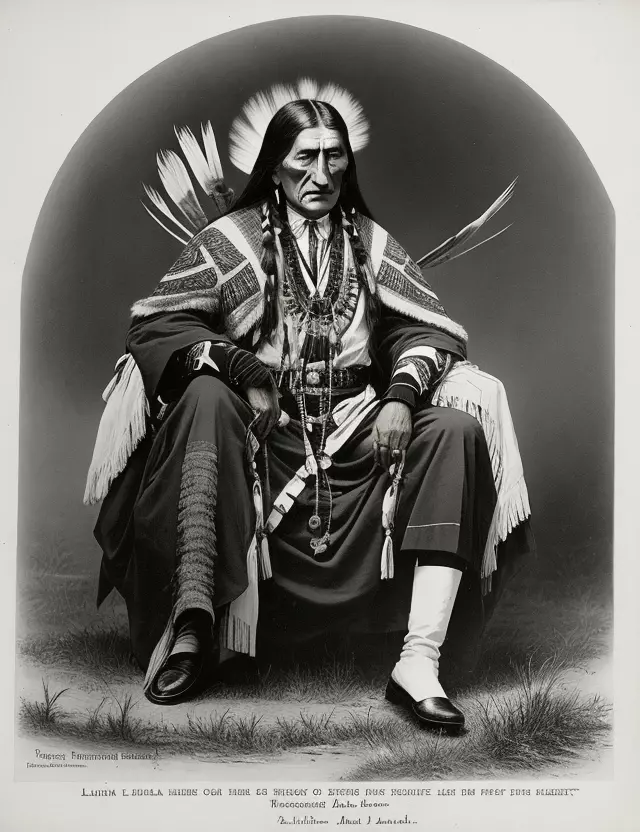Tragic End for Sitting Bull: Death on the Standing Rock Indian Reservation
Demise of Hunkpapa Lakota Leader (1890-12-15)

Sitting Bull's Tragic End
December 15, 1890, marks a somber chapter in Native American history as Hunkpapa Lakota leader Sitting Bull meets a tragic end. On the Standing Rock Indian Reservation, Sitting Bull's life takes a fateful turn, culminating in a tragic incident involving Indian agency police.
Hunkpapa Lakota Leadership
Sitting Bull, a prominent leader of the Hunkpapa Lakota Sioux, was known for his leadership during times of conflict, including the Battle of the Little Bighorn. His advocacy for Native American rights and resistance against U.S. government policies made him a symbol of Native American resistance.
Conflict and Tensions
During this period, tensions between Native American communities and the U.S. government were heightened, and efforts to suppress traditional practices and ways of life were in full force. Sitting Bull's influence and resistance to such efforts made him a target of authorities.
Fateful Incident
The circumstances leading to Sitting Bull's death unfolded in a tragic incident involving Indian agency police. Amidst attempts to arrest him, violence erupted, resulting in the death of Sitting Bull. The event marked a dark moment in the struggle for Native American rights and autonomy.
Impact on Native American History
Sitting Bull's tragic death had a profound impact on Native American history, symbolizing the challenges faced by indigenous leaders who resisted assimilation and sought to preserve their cultural heritage. The incident at Standing Rock became a poignant reminder of the injustices faced by Native communities during this turbulent period.
Legacy of Resistance
Sitting Bull's legacy endures as a symbol of Native American resistance and the ongoing struggle for sovereignty and cultural preservation. His tragic end serves as a poignant chapter in the broader narrative of the challenges faced by indigenous peoples in the face of historical adversity.



